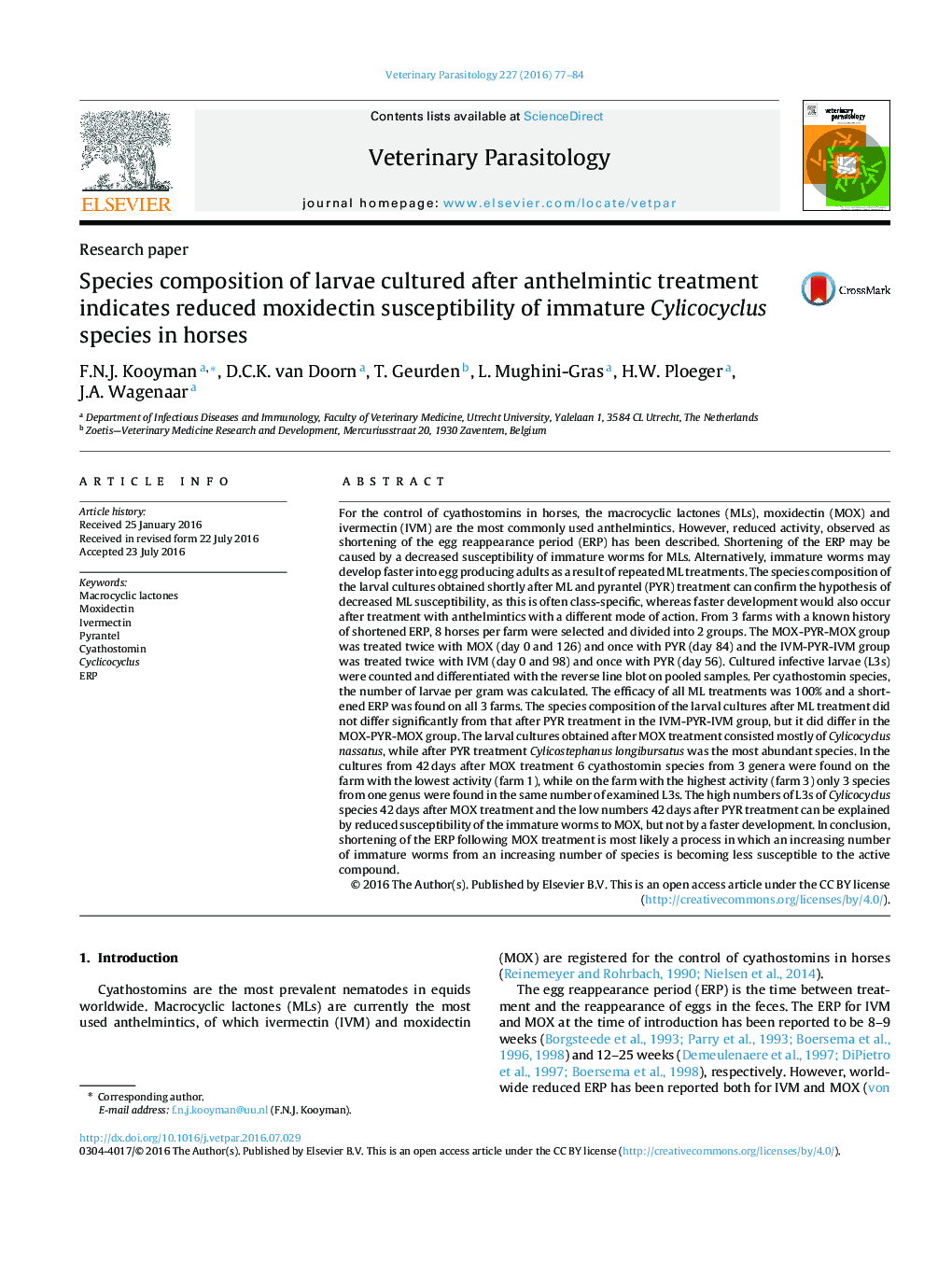| کد مقاله | کد نشریه | سال انتشار | مقاله انگلیسی | نسخه تمام متن |
|---|---|---|---|---|
| 5802081 | 1555649 | 2016 | 8 صفحه PDF | دانلود رایگان |

- Shortening of ERP was found on all three farms after IVM and MOX treatment.
- The Cylicocyclus L3s dominate in larval cultures obtained after MOX treatment.
- The shorter the ERP, the more cyathostomin species shortly after MOX treatment.
- Decreased MOX susceptibility is the most plausible cause of shortening of the ERP.
For the control of cyathostomins in horses, the macrocyclic lactones (MLs), moxidectin (MOX) and ivermectin (IVM) are the most commonly used anthelmintics. However, reduced activity, observed as shortening of the egg reappearance period (ERP) has been described. Shortening of the ERP may be caused by a decreased susceptibility of immature worms for MLs. Alternatively, immature worms may develop faster into egg producing adults as a result of repeated ML treatments. The species composition of the larval cultures obtained shortly after ML and pyrantel (PYR) treatment can confirm the hypothesis of decreased ML susceptibility, as this is often class-specific, whereas faster development would also occur after treatment with anthelmintics with a different mode of action. From 3 farms with a known history of shortened ERP, 8 horses per farm were selected and divided into 2 groups. The MOX-PYR-MOX group was treated twice with MOX (day 0 and 126) and once with PYR (day 84) and the IVM-PYR-IVM group was treated twice with IVM (day 0 and 98) and once with PYR (day 56). Cultured infective larvae (L3s) were counted and differentiated with the reverse line blot on pooled samples. Per cyathostomin species, the number of larvae per gram was calculated. The efficacy of all ML treatments was 100% and a shortened ERP was found on all 3 farms. The species composition of the larval cultures after ML treatment did not differ significantly from that after PYR treatment in the IVM-PYR-IVM group, but it did differ in the MOX-PYR-MOX group. The larval cultures obtained after MOX treatment consisted mostly of Cylicocyclus nassatus, while after PYR treatment Cylicostephanus longibursatus was the most abundant species. In the cultures from 42Â days after MOX treatment 6 cyathostomin species from 3 genera were found on the farm with the lowest activity (farm 1), while on the farm with the highest activity (farm 3) only 3 species from one genus were found in the same number of examined L3s. The high numbers of L3s of Cylicocyclus species 42Â days after MOX treatment and the low numbers 42Â days after PYR treatment can be explained by reduced susceptibility of the immature worms to MOX, but not by a faster development. In conclusion, shortening of the ERP following MOX treatment is most likely a process in which an increasing number of immature worms from an increasing number of species is becoming less susceptible to the active compound.
121
Journal: Veterinary Parasitology - Volume 227, 30 August 2016, Pages 77-84